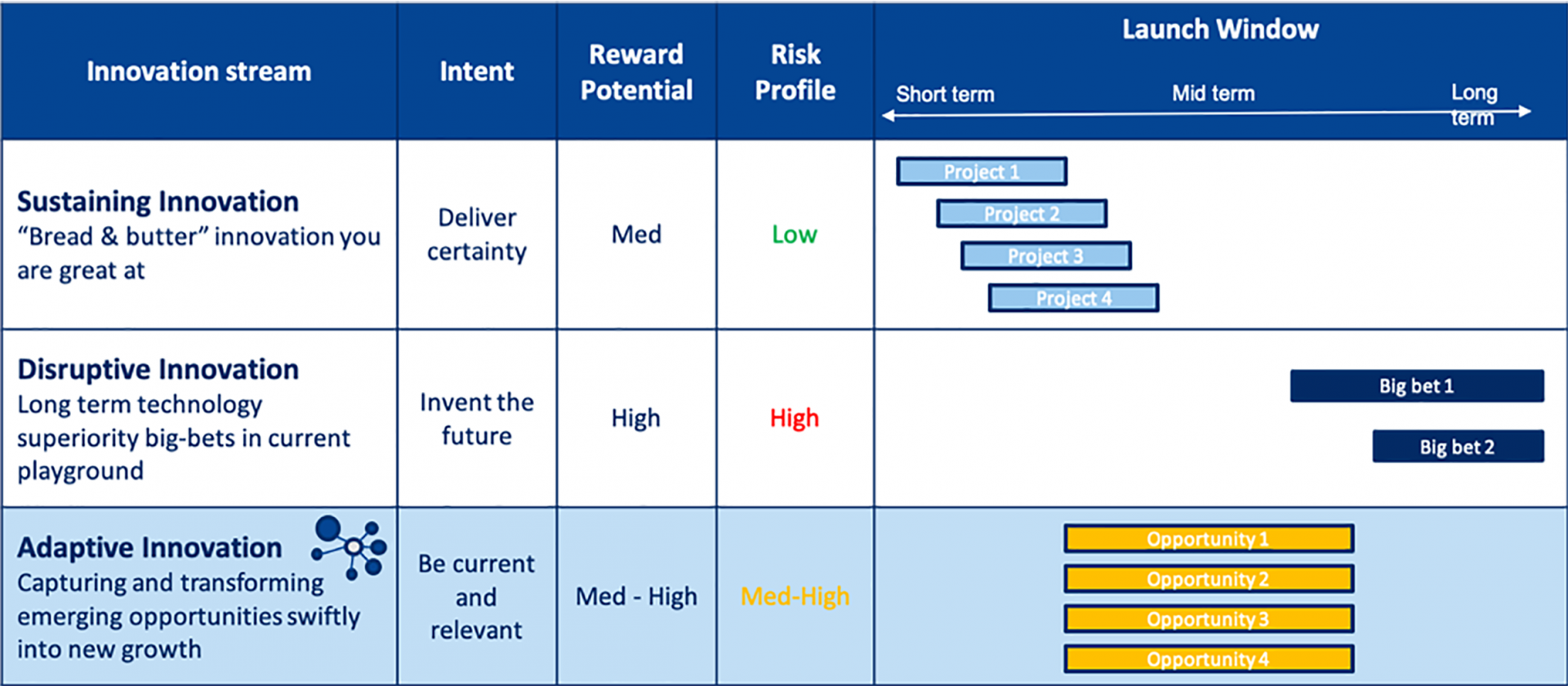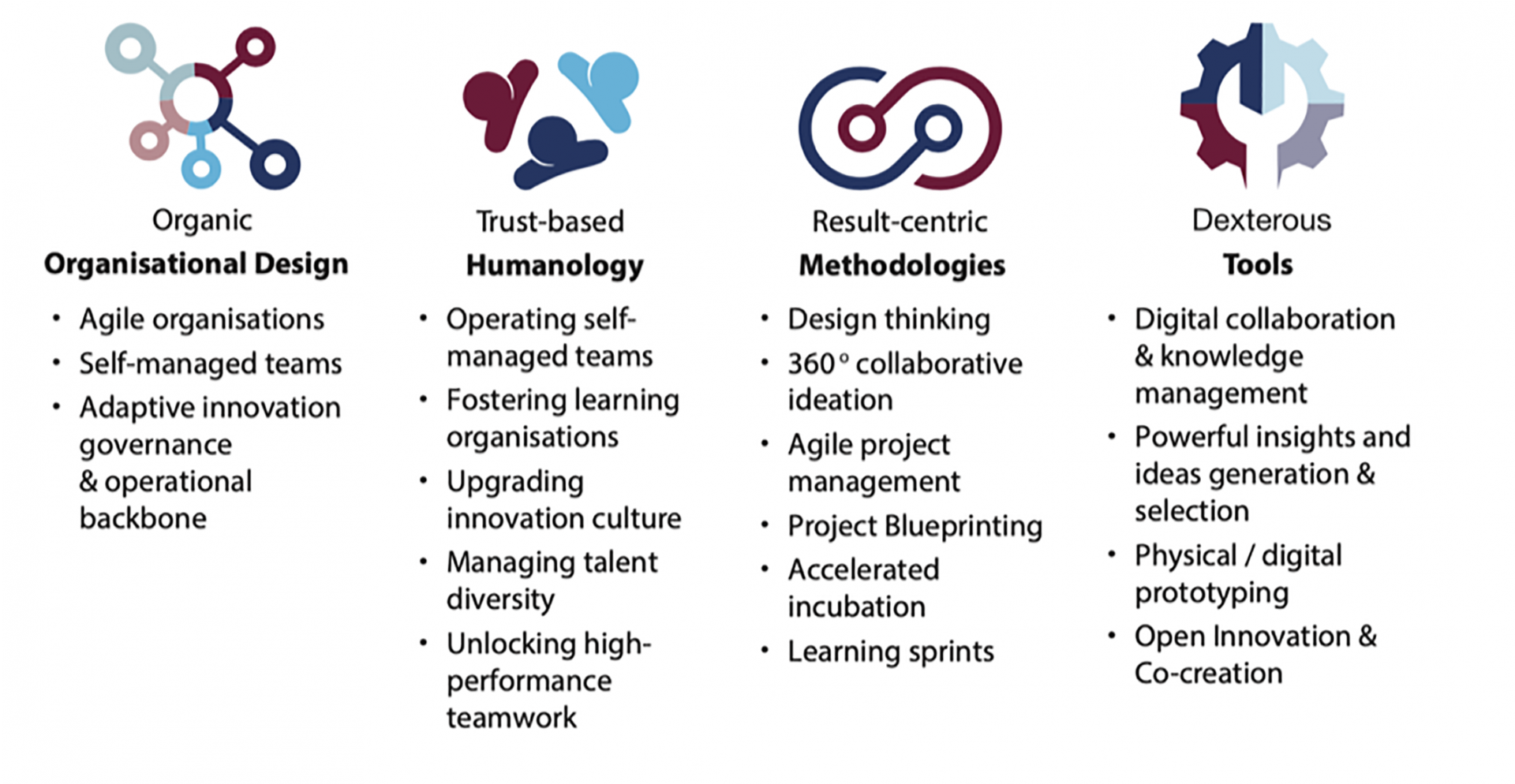What Got Us Here Won’t Get Us There!
The Vital Need For Adaptive Innovation
In a fast-changing world – morphing before our eyes like we’ve never seen before – the ‘same old, same old’ is fast outdated and stale. If we have learned anything from this pandemic, it is this. Winners in business will be those who innovate for a new world – new products, and new services, for a global market yet to be imagined. The path to success is to actively imagine, search for new ideas and innovate, creating products and services that we, as customers, don’t yet know that we’ll need, or, at the very least, have high on our wish list of desirables.
The question is: how? Far from idle speculation, the answer to this question is fast becoming a matter of survival. Business leaders across the sectors, acutely aware of this new reality, are taking action to innovate as best they can. But, such is the speed of change that often delivery to market isn’t fast enough to generate growth.
Here, we look at how new adaptive approaches to innovation can address this issue.
What Got Us Here Won’t Get Us There
Designing and delivering innovation to market has always been a challenge. The difference today is the scale of the challenge; a highly-volatile environment takes it to new and daunting dimensions. To survive, it is imperative that industry players remain relevant, capture new trends, create ideas, and swiftly transform innovation into growth across a range of new territories. To do this, the old organisational and operational models – built for a time when the pace of change was significantly slower, when innovation was more often than not relegated to a single department – are proving woefully inadequate. What is required is a new fluid approach, sparking an organisation’s collective imagination and capturing opportunities not just via a finite set of functions and teams but from across every silo within an organisation, and transforming them swiftly into growth.
The Innovation Gap
Historically, healthy innovation pipelines have flowed from:
- Mastery in delivering bread-and-butter short-term innovation, via a lean functional approach to design and delivery initiatives.
- Investment in internal long-term innovation capabilities to drive disruptive shifts in core product categories, via proprietary technology inventions that address unmet consumer needs.
The ability to operate these two innovation streams concurrently has long been a model for success. For decades, it has enabled industry giants to deliver reliable growth with periodic boosts in revenue generated by consumer winning innovations – think pull-up diapers, for example, liquid detergent, or 2-in-1 shampoo and conditioner.
Today, however, this model is, put simply, not comprehensive enough for the task at hand. Now, innovation sparks come from anywhere and everywhere, and business leaders can quickly find themselves out of depth as fast-moving disruptors offer new and irresistible products and value. Several factors play into this new reality: emergence of novel technologies; new data analytics capabilities, fresh insights and changing consumer value; irreversible developments in the retail environment; shifts in consumer psychology (consider for a moment the impact of Black Lives Matter); and macro-environmental shifts such as climate change and COVID-19. These fast-developing external factors demand that industries constantly capture emerging trends and insights, and translate them into innovations that will shape the market moving forward.
Organisations Are Perfectly Designed To Deliver The Results They Get!
Innovations, designed within organisations, are in large part shaped by the manner in which the organisation is structured; they are dependent upon the particular functional silo and workstreams in which they are developed. Consider, for example, a traditional organisation with a product development team and a separate packaging development team. What sort of innovation will come out of these teams? A product innovation. Or, a packaging innovation. At the very best, innovation teams will look to join the dots and work on holistic product/packaging opportunities. But, this ‘function-led innovation’ model, although addressing some of the needs (especially in businesses where incremental innovation is the main source of growth), is not addressing today’s significantly richer and more complex reality.
Today, new sources of insights – from data analytics, for example, or all-too-apparent shifts in global trends – and the opportunities that emerge from these, do not fit traditional organisational constructs. Rather, they require ‘innovation-led’ operating models – namely, ‘adaptive systems’ that aren’t restricted to functional silos or workstreams, but rather work across silos and enable an organisation to adapt to the specific needs of the innovation it is trying to deliver.
Research suggests that industry is fast waking up to the need to transform and become more agile. McKinsey recently published data showing that the COVID-19 pandemic has influenced 59% of leaders to expect large changes in their approach to innovation, with 55% mentioning that their product portfolio will change as a result. 78% also mentioned a need to lead differently and operate via a new set of systems and processes. To conclude, there is consensus that operational innovation models need to adapt and become more agile in order to swiftly capture and transform new opportunities into growth.
Adaptive Innovation – From Ambidextrous To Multidextrous Leadership
Far from scrapping well-tested models and starting afresh, Skarbek believes the way forward is to add an additional all-inclusive and complementary layer of innovation to existing operational constructs. Innovation pipelines already in place continue as before, but in addition, an adaptive set-up is introduced to capture novel opportunities, wherever they may lie, and swiftly transform them into new growth.
Fig.1 – A new innovation stream plugging innovation portfolio gaps with high potential value opportunities

 Leveraging decades of experience in disruptive innovation leadership in global Fast-Moving Consumer Goods companies, Skarbek has built its response to this emerging challenge via its Adaptive Innovation Systems construct – an operational model combining the best of lean and agile methodologies while drawing on complex adaptive systems thinking with high autonomy teams and tools. This blend, born from experience, is specifically designed to enable organisations that want to complement and strengthen their traditional innovation engines with novel adaptive ways to capture, design and deliver new streams of innovation. The system offers a pragmatic approach to an organisation’s journey towards novel innovation value, at speed, via testing and scaling new operational models, underpinned by unique tools and capabilities.
Leveraging decades of experience in disruptive innovation leadership in global Fast-Moving Consumer Goods companies, Skarbek has built its response to this emerging challenge via its Adaptive Innovation Systems construct – an operational model combining the best of lean and agile methodologies while drawing on complex adaptive systems thinking with high autonomy teams and tools. This blend, born from experience, is specifically designed to enable organisations that want to complement and strengthen their traditional innovation engines with novel adaptive ways to capture, design and deliver new streams of innovation. The system offers a pragmatic approach to an organisation’s journey towards novel innovation value, at speed, via testing and scaling new operational models, underpinned by unique tools and capabilities.
Fig.2 – The Adaptive Innovation System Elements
 Industry players wanting to minimise risk and yet strengthen their innovation portfolios, to be relevant and forward thinking, will need to embark on a new journey to avoid the danger of sclerosis from sticking with the old ‘function-led’ model of innovation. They will need to broaden their field of vision in order to capture the windfalls of imagination that spark across functional silos. A willingness to do this, or not, will determine the winners and losers of the next decade.
Industry players wanting to minimise risk and yet strengthen their innovation portfolios, to be relevant and forward thinking, will need to embark on a new journey to avoid the danger of sclerosis from sticking with the old ‘function-led’ model of innovation. They will need to broaden their field of vision in order to capture the windfalls of imagination that spark across functional silos. A willingness to do this, or not, will determine the winners and losers of the next decade.
Get in touch with the Skarbek team to hear more about Adaptive Innovation Systems.